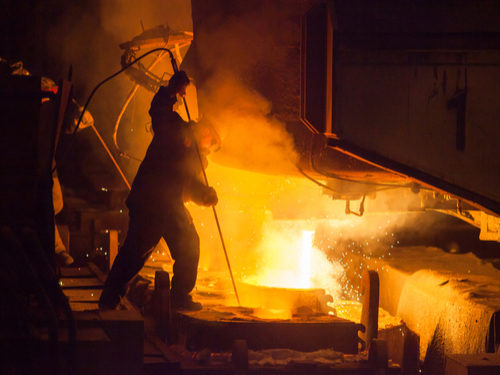
Visit Our Sponsors |
|
|
|
|
|
|
|
|
|
|
|
|
|
|
|
|
|
|
|
|
|
|
|
|
|
|
|
|
|
|
|
|
|
|
|
|
|
|
|
|
|
|
|
|
|
|
|
|
|
|
|
|
|
|
|
|
|
|
|

Steel could shed its reputation as a climate threat by using hydrogen instead of fossil fuels for as much as half of global output by 2050, according to BloombergNEF.
The steel industry could adopt hydrogen for between 10% and 50% of output by mid-century given the right carbon pricing, BloombergNEF analysts wrote in a report. The sector accounts for as much as 9% of global carbon emissions, according to the World Steel Association.
“Hydrogen technologies offer a viable pathway to slash the emissions from making steel,” Kobad Bhavnagri, head of special projects at BloombergNEF, said by email. “No big R&D breakthroughs are necessary. If policy was in place, the world could start producing green steel within a decade.”
Hydrogen is one option for steelmakers facing louder calls from climate lobbyists and regulators to tackle their carbon problem. It’s an alternative already being tested by industry giants including top supplier ArcelorMittal, as well as Germany’s Thyssenkrupp AG.
Steel is currently made from mined iron using a process largely unchanged for more than 150 years. Iron ore is first smelted with carbon-rich coke in huge blast furnaces that emit carbon gases and churn out liquid metal.
Gases can be used instead of coke as reduction agents in an alternative process called direct reduced iron, or DRI. This does away with the blast furnace and is already employed in some locations using natural gas.
“Hydrogen can do everything coal does in the steel-making process, and the technology to make fossil-free steel is already currently operating with natural gas in many parts of the world,” Bhavnagri said. DRI accounts for nearly 6% of steel output worldwide, according to a report from Citigroup Inc.
Hydrogen technology will be competitive with high-cost, coal-based plants when the cost of renewable hydrogen falls below $2.20 a kilogram, assuming coking coal prices at $310 a ton. That’s possible by 2030, BloombergNEF said.
Any shift to hydrogen would pose a danger to coking coal producers and their investors. The material has few uses other than in blast furnaces.
“It has long been thought that met-coal is untouchable and would be unaffected by the changes sweeping the energy sector,” Bhavnagri said. “Hydrogen extends the reach of renewables right into the front yard of met-coal miners.”
RELATED CONTENT
RELATED VIDEOS
Timely, incisive articles delivered directly to your inbox.


